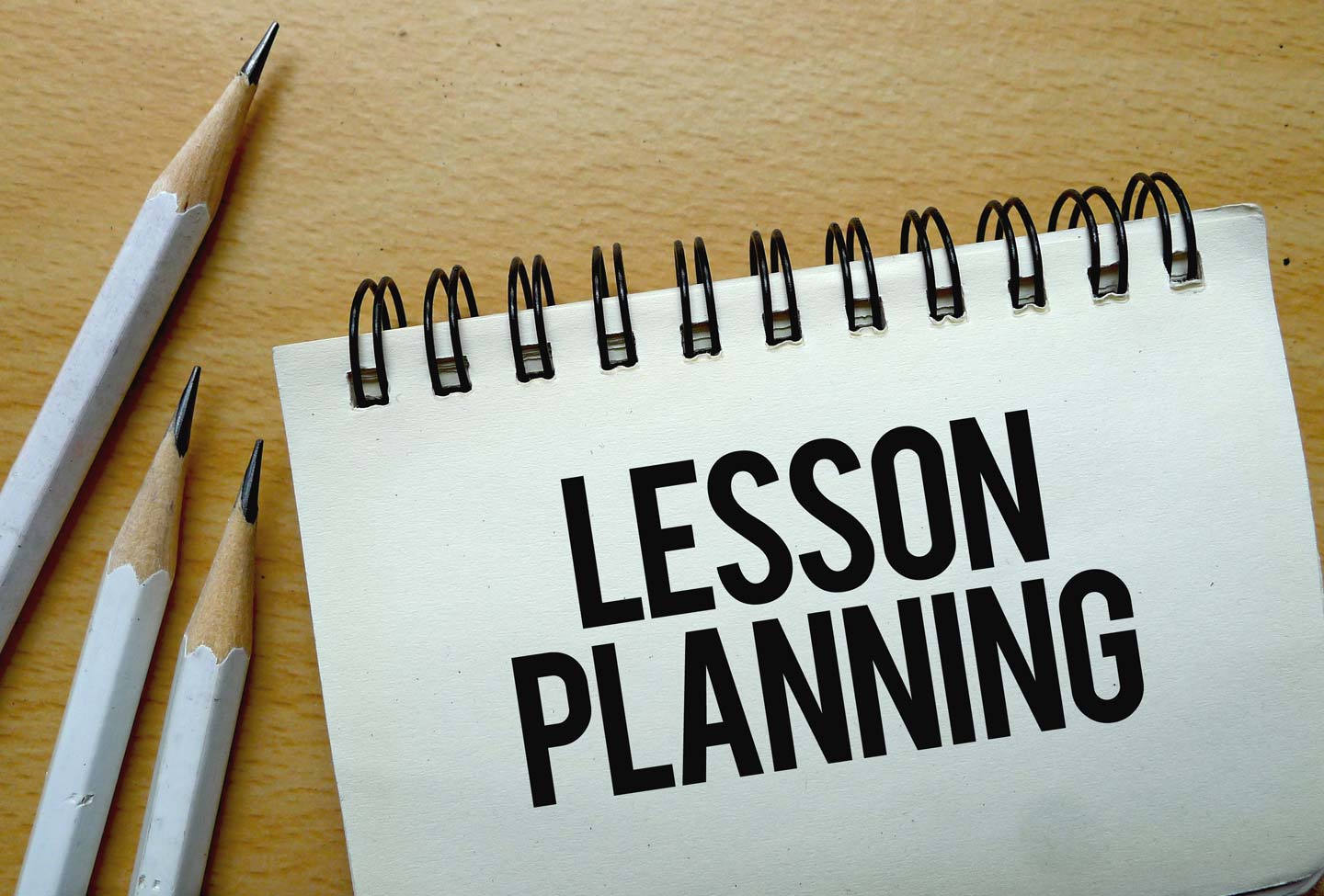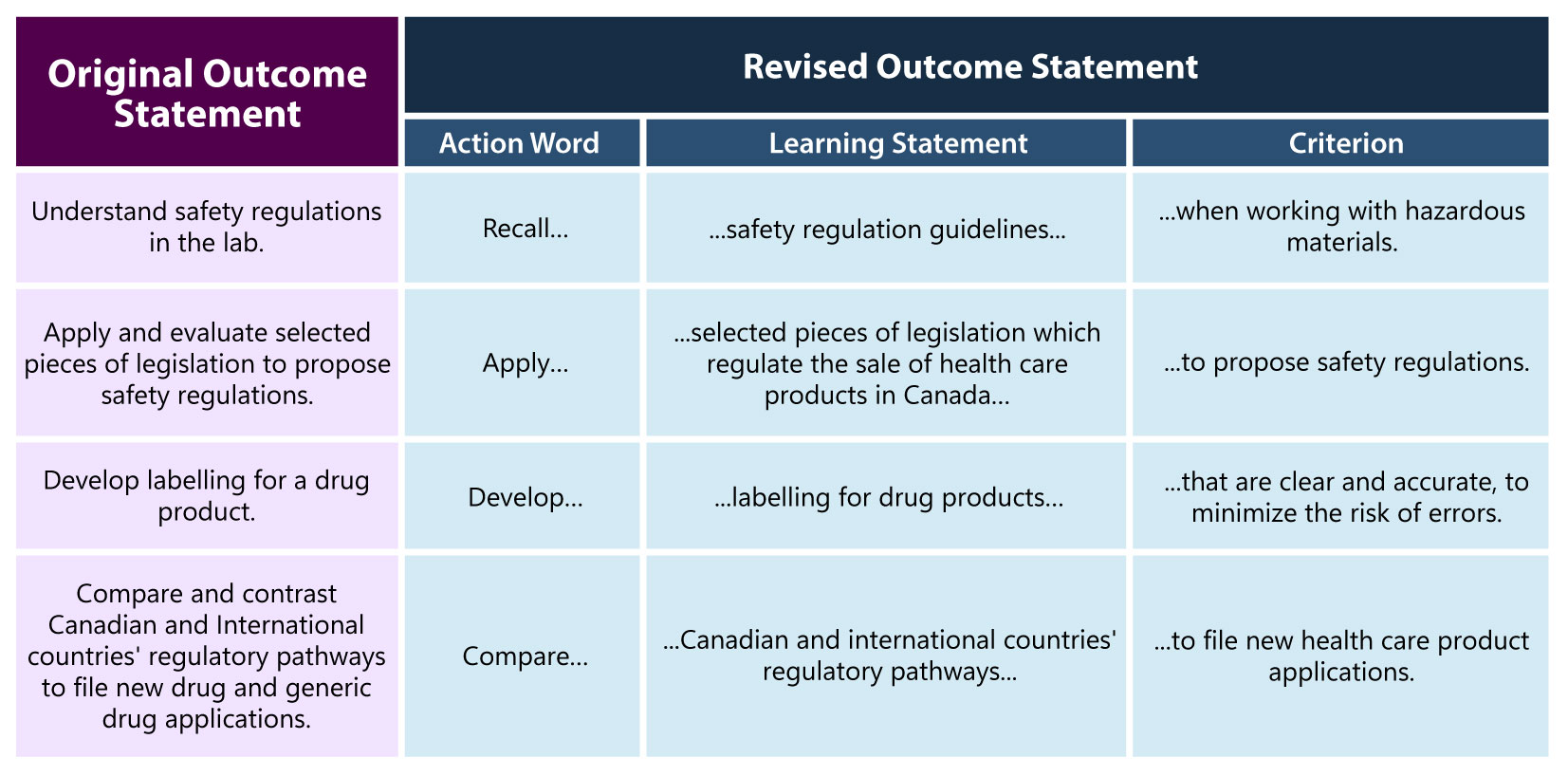Writing Learning Outcomes

Now, let’s map out a course using the concepts of backward design. Our focus is on the first step in backward design: the end goal. To complete this activity, please download a copy of the Online Course Design Tool below; you will be using this tool throughout the design process.
Download the Online Course Design Tool (DOCX, 48 KB)

-
Course Goals: What will learners need to be able to do by the end of this course?
-
Assessment: How will I know that learners have achieved the course goals?
-
Skills/Knowledge: What will learners need to complete the final assessment successfully?
-
Teaching: What is the best way to teach the skills/knowledge that learners need?
Note that the end goals for a course are defined via a series of learner-centered course learning outcomes. Although there is no magic number, it is suggested that anywhere from 6 to 10 outcomes is ideal. The final number you require is very much driven by each course and its context. Just remember that the learning outcomes will align with the assessments and instructional strategies as you continue to move forward in the process. So, you are cautioned to think critically about how many learning outcomes are required for your course, if any can be merged, or if some can be eliminated altogether.
Step 1 – Establish your course’s learning outcomes. By establishing your outcomes first, you will be able to use backward design to create a path of high-quality learning tasks that will be relevant and meaningful to the learner. They will also ensure a clear path on how the learning will be measured.
Strong learning outcomes are:
- Measurable
- Observable
- Specific
- Learner-centered
When creating learning outcomes, involve the following:
- Action verbs (refer to Bloom’s Taxonomy)
- Subject content
- Level of achievement
In addition to aligning course outcomes, it is important to know how to write learning outcomes that specify the knowledge, skills, attitudes and behaviours that learners will gain or develop after their learning experience. As we noted in the previous section of the module, there are three essential ingredients of a well-written learning outcome:
- one action word (verb selected with reference to Bloom’s Taxonomy)
- a learning statement (the "what")
- a criterion (the purpose of/criteria for the "what")
The SMART acronym is a popular set of criteria often associated with the development and writing of outcomes. You might already be familiar with this acronym, but let’s take a quick revisit and refresh ourselves about what this acronym means regarding the completeness of course learning outcomes.
- Specific: States what the learner will be able to do
- Measurable: Observable by the end of the course
- Attainable: Achievable within specified conditions; not too challenging for the course
- Relevant: Addresses needs of the learner and aligns with the greater context in which the course is situated
- Time-Framed: Achievable by the end of the course (Dion, 1981)
Note that the SMART criteria also reinforce that learning outcomes are learner-focused versus instructor-focused.
Let's look here at a few before-and-after versions of learning outcomes to consider better ways to improve the overall quality. Can you understand why the changes are made for each statement? Click the Feedback button below the examples to view the answer. Remember that each outcome statement would be preceded by the phrase "By the end of the course, participants will be able to":

Humber College : Download Alternative Format (PDF)